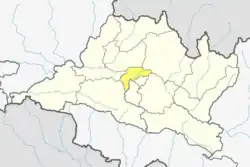Dakshinkali
Dakshinkali Municipality
दक्षिणकाली नगरपालिका | |
|---|---|
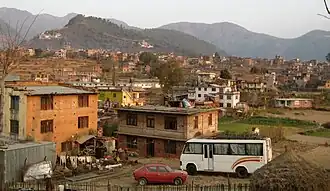 Dakshinkali in 2009 | |
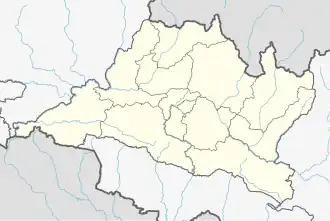 Dakshinkali Municipality Location in Nepal 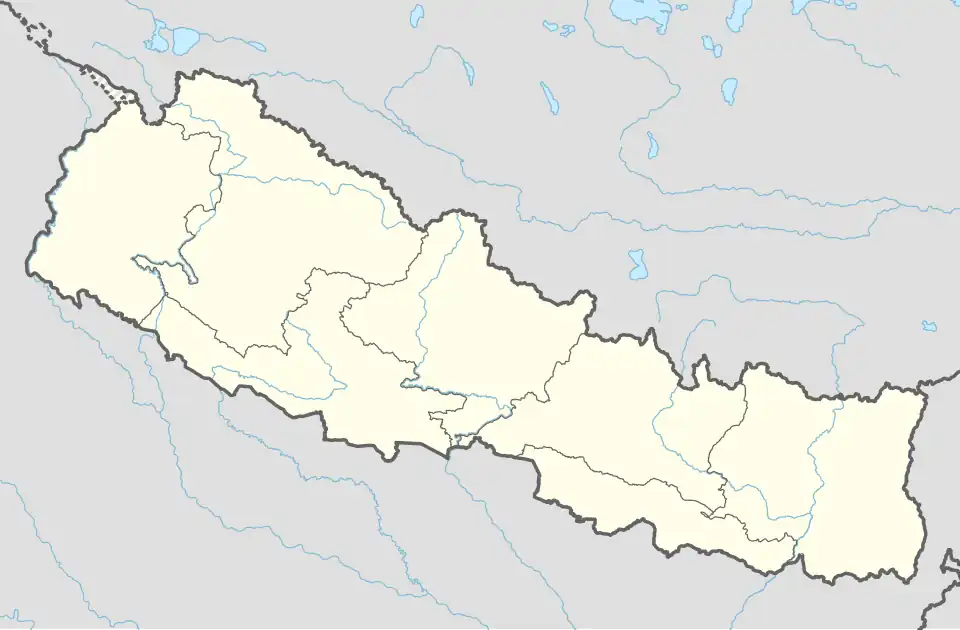 Dakshinkali Municipality Dakshinkali Municipality (Nepal) | |
| Coordinates: 27°35′0″N 85°15′0″E / 27.58333°N 85.25000°E | |
| Country | |
| Province | Bagmati |
| District | Kathmandu |
| Established | December 2014 |
| Government | |
| • Mayor | Mohan Basnet (NC) |
| • Deputy Mayor | Basanti Tamang (Dangol) (NC) |
| Area | |
• Total | 42.6 km2 (16.4 sq mi) |
| Population | |
• Total | 26,372 |
| • Density | 620/km2 (1,600/sq mi) |
| • Ethnicities | Newar Bahun Chhetri Tamang Magar |
| Time zone | UTC+5:45 (NST) |
| Website | www |
Dakshinkali is a municipality in Kathmandu District in the Province No. 3 of Nepal that was established on 2 December 2014 by merging the former Village development committees Chalnakhel, Chhaimale, Sheshnarayan, Sokhel, Talku Dudechaur and Old-Dakshinkali.[1][2] The municipality's name means 'Southern Kali' and refers to a several centuries old temple complex that lies in the vicinity.
Toponymy
Language origin
- Language family: Indoeuropean
- Language: Sanskrit
Etymology
“Dakshin” means south or the southern direction. “Kali” refers to the Hindu goddess Kali. Therefore, Dakshinkali is interpreted as “the temple/place of the goddess Kali in the south.”
Dakshin (दक्षिण) means “south, southern” and comes from Sanskrit दक्षिण (dakṣiṇa) meaning “south” or “right-hand side.” Kali (काली) is an Hindu goddess, from Sanskrit काली (Kālī) meaning “the black one, the dark goddess,” feminine of काल (kāla) meaning time, blackness, death. The toponym Dakshinkali is a compound Sanskrit name indicating a sacred site dedicated to the goddess Kali, located in the southern direction of the valley.
Population
Dakshinkali municipality has a total population of 24,297 according to 2011 Nepal census.[3] The population grew to 26,372 at the 2021 Nepal census. Around 99.3% of the residents are Nepali citizens and 80% are literate.[4]
- Dakshinkali municipality
-
 Pharping
Pharping -
 Fields
Fields -
 Grain harvest
Grain harvest -
 Cave of Goraknath
Cave of Goraknath -
 Rice terraces
Rice terraces -
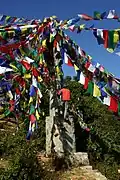 Prayer flags
Prayer flags -
 Monastery of Vajrayogini
Monastery of Vajrayogini -
 Dakshinkali temple
Dakshinkali temple
See also
References
- ^ "Govt announces 61 municipalities". The Kathmandu Post. 3 December 2014. Retrieved 2 December 2014.
- ^ "Govt creates 61 new municipalities". República. 3 December 2014. Retrieved 2 December 2014.
- ^ "2011 Nepal census (Ward Level)" (PDF). Central Bureau of Statistics. November 2012. Archived from the original (PDF) on July 31, 2013.
- ^ "Dakshinkali (Municipality, Nepal) - Population Statistics, Charts, Map and Location". www.citypopulation.de. Retrieved 2024-02-09.
External links
